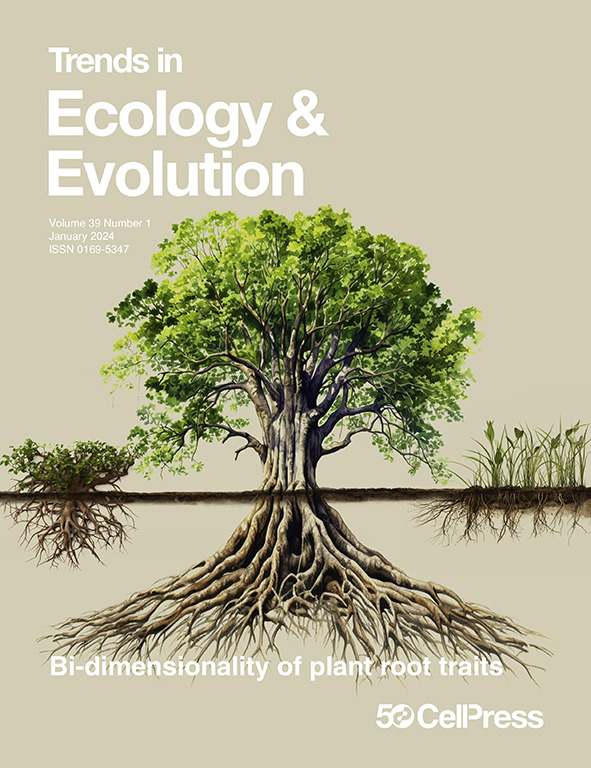从高度多样化生态系统的声学数据中获得意义。
IF 16.7
1区 生物学
Q1 ECOLOGY
Trends in ecology & evolution
Pub Date : 2025-05-01
Epub Date: 2025-04-11
DOI:10.1016/j.tree.2025.03.004
引用次数: 0
摘要
被动声监测(PAM)可以提供新的生态学见解,并为保护高度多样化的生态系统提供信息。声学指数提供了一种广泛使用但经常被误解的分析选择。有效利用需要:(i)假设生物和非生物成分如何影响声音;(ii)选择有效、稳健、直观的指标;(三)整合互补数据源。本文章由计算机程序翻译,如有差异,请以英文原文为准。
Deriving meaning from acoustic data in hyper-diverse ecosystems.
Passive acoustic monitoring (PAM) can offer novel ecological insights and inform conservation of hyper-diverse ecosystems. Acoustic indices present one analytical option that is broadly used but frequently misinterpreted. Effective use requires (i) hypothesising how biotic and abiotic components influence sound; (ii) selecting valid, robust, intuitive indices; and (iii) integrating complementary data sources.
求助全文
通过发布文献求助,成功后即可免费获取论文全文。
去求助
来源期刊

Trends in ecology & evolution
生物-进化生物学
CiteScore
26.50
自引率
3.00%
发文量
178
审稿时长
6-12 weeks
期刊介绍:
Trends in Ecology & Evolution (TREE) is a comprehensive journal featuring polished, concise, and readable reviews, opinions, and letters in all areas of ecology and evolutionary science. Catering to researchers, lecturers, teachers, field workers, and students, it serves as a valuable source of information. The journal keeps scientists informed about new developments and ideas across the spectrum of ecology and evolutionary biology, spanning from pure to applied and molecular to global perspectives. In the face of global environmental change, Trends in Ecology & Evolution plays a crucial role in covering all significant issues concerning organisms and their environments, making it a major forum for life scientists.
 求助内容:
求助内容: 应助结果提醒方式:
应助结果提醒方式:


